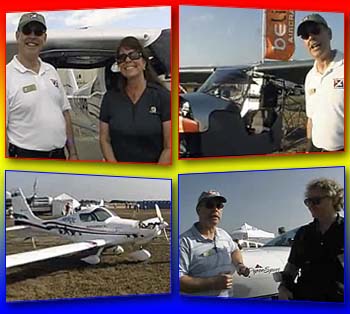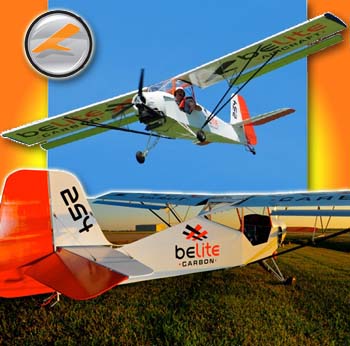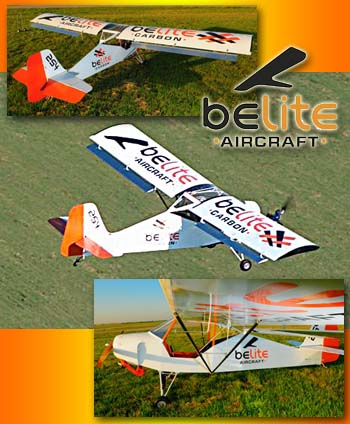
Welcome back to the airplane equivalent of an old friend. As you can see at the bottom of this post, Videoman Dave and I did many video interviews with Chipper creator. James Weibe (view at bottom). Pilots seemed always to enjoy hearing about his latest development. James came to aviation from the computer business, where the pace isn’t fast — it’s furious! Over the years Dave and I covered James and his output, we’d make a new video at every airshow, it seemed, as he had moved on from the last design to the next. That’s what they do in the world of computers but it made pilots’ heads spin. It also probably slowed sales because, as with computers, why buy this airplane when the next one will be even better? It Began with Kitfox Lite James started out with the Kitfox Lite single place Part 103 ultralight vehicle. Current Kitfox owners did not plan to pursue the single seater that Kitfox founder Dan Denney had created years earlier.


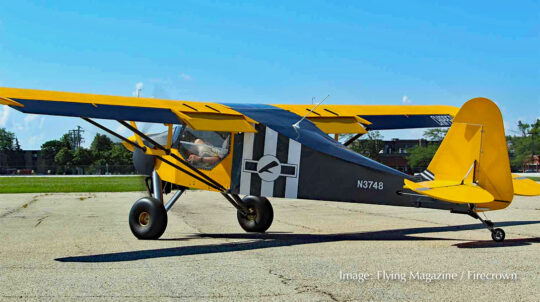 James came to aviation from the computer business, where the pace isn't fast — it's furious! Over the years Dave and I covered James and his output, we'd make a new video at every airshow, it seemed, as he had moved on from the last design to the next. That's what they do in the world of computers but it made pilots' heads spin.
James came to aviation from the computer business, where the pace isn't fast — it's furious! Over the years Dave and I covered James and his output, we'd make a new video at every airshow, it seemed, as he had moved on from the last design to the next. That's what they do in the world of computers but it made pilots' heads spin.
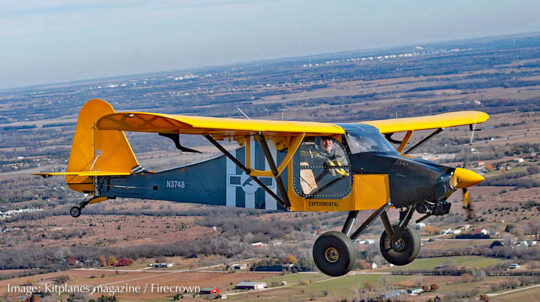 It also probably slowed sales because, as with computers, why buy this airplane when the next one will be even better?
It also probably slowed sales because, as with computers, why buy this airplane when the next one will be even better?
 James founded Belite and began with ideas about carbon fiber tube airframes. It was a marvelous, modern, even exotic idea but it was quite unorthodox for most builders. Plus, in those days, carbon fiber was expensive and a Part 103 aircraft needed to be affordable.
James went on to variations on the theme changing so frequently that he produced few or none of the development models. While he may not have sold large numbers, his fast progress kept the curiosity of pilots sky high. He regularly drew crowds at events.
A caffein-stimulated fury of designs finally seemed to settle down when
James founded Belite and began with ideas about carbon fiber tube airframes. It was a marvelous, modern, even exotic idea but it was quite unorthodox for most builders. Plus, in those days, carbon fiber was expensive and a Part 103 aircraft needed to be affordable.
James went on to variations on the theme changing so frequently that he produced few or none of the development models. While he may not have sold large numbers, his fast progress kept the curiosity of pilots sky high. He regularly drew crowds at events.
A caffein-stimulated fury of designs finally seemed to settle down when  Even then, James kept making changes, ever improving the product like an engineer does. Images with this article reflect Chipper STOL, although Chipper 2 coming later this year will have all of James' last refinements to the aircraft.
As Belite and James began to gear up for Chipper production, a most unfortunate fire destroyed costly inventory and lots of intellectual property while damaging tooling. It was a devastating loss. Ever the professional, James forged on for a while but the blow had been heavy. Eventually, he chose to exit the airplane business and that's where SkyKicker comes into the picture.
Even then, James kept making changes, ever improving the product like an engineer does. Images with this article reflect Chipper STOL, although Chipper 2 coming later this year will have all of James' last refinements to the aircraft.
As Belite and James began to gear up for Chipper production, a most unfortunate fire destroyed costly inventory and lots of intellectual property while damaging tooling. It was a devastating loss. Ever the professional, James forged on for a while but the blow had been heavy. Eventually, he chose to exit the airplane business and that's where SkyKicker comes into the picture.


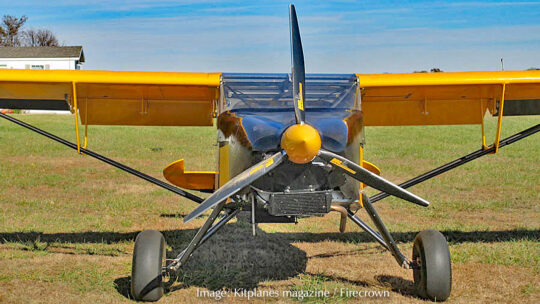 The pair is at an early stage of the development in this project. SkyKicker's website is in process. However, given a design that has already proven itself, and adding the high level of energy Nick and Charlotte are bringing to the task, I doubt it will be long before Chipper becomes a product on the market.
Until their business is fully established, you can contact them by
The pair is at an early stage of the development in this project. SkyKicker's website is in process. However, given a design that has already proven itself, and adding the high level of energy Nick and Charlotte are bringing to the task, I doubt it will be long before Chipper becomes a product on the market.
Until their business is fully established, you can contact them by 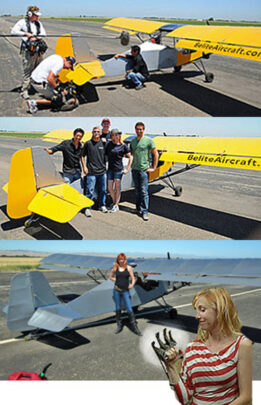 The episode discussed how an Alaska pilot had repaired his aircraft after a bear attacked it and clawed the fabric covering in several places (see simulated bear claw). The pilot made repairs with — you guessed it! — duct tape, and flew home successfully.
To test this pilot's claim in their characteristic manner, the Myth Busters team got one of James' airplanes and covered every cloth surface using duct tape (genuine image, not Photoshopped). James successfully flew it for them, though "not very long and not very high."
The show generated so much interest that Belite's website crashed for a few hours.
The episode discussed how an Alaska pilot had repaired his aircraft after a bear attacked it and clawed the fabric covering in several places (see simulated bear claw). The pilot made repairs with — you guessed it! — duct tape, and flew home successfully.
To test this pilot's claim in their characteristic manner, the Myth Busters team got one of James' airplanes and covered every cloth surface using duct tape (genuine image, not Photoshopped). James successfully flew it for them, though "not very long and not very high."
The show generated so much interest that Belite's website crashed for a few hours.
 Here's a fresh video about SkyKicker Aviation and their plans to return Chipper to production, recorded in late April 2024.
https://youtu.be/CqHpPJKEpq0
Here's a fresh video about SkyKicker Aviation and their plans to return Chipper to production, recorded in late April 2024.
https://youtu.be/CqHpPJKEpq0
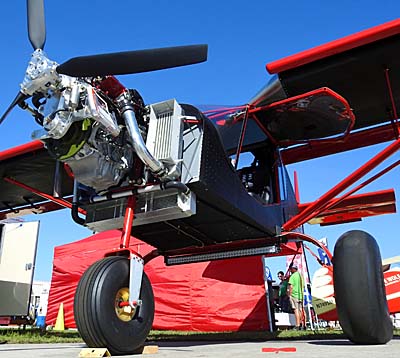 On a single day of recording several videos at
On a single day of recording several videos at 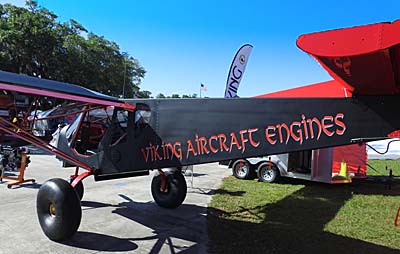 Viking Aircraft Engines takes a Honda block and sets it up as an aircraft powerplant. Many homebuilders have installed them since the company reorganized in 2010. Their powerful engines have
Viking Aircraft Engines takes a Honda block and sets it up as an aircraft powerplant. Many homebuilders have installed them since the company reorganized in 2010. Their powerful engines have 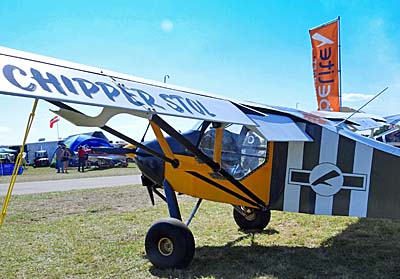 He has altered the wing to be all metal with a bonded adhesion that leaves the metallic upper surface as clean as a composite wing. Fat tundra tires fitted to the show example gave the taildragger a gutsy appeal.
He has altered the wing to be all metal with a bonded adhesion that leaves the metallic upper surface as clean as a composite wing. Fat tundra tires fitted to the show example gave the taildragger a gutsy appeal.
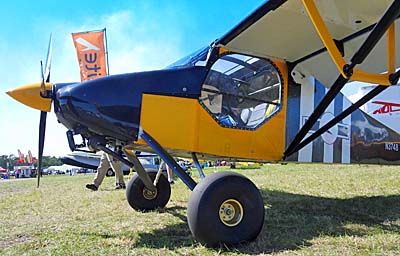 The events triggering the long distance migration by Viking and Chipper are the Alaska Airman show in May— held in the cavernous FedEx hangar plus outside displays — plus the Valdez STOL competition.
Now in its 21st season for 2018, the
The events triggering the long distance migration by Viking and Chipper are the Alaska Airman show in May— held in the cavernous FedEx hangar plus outside displays — plus the Valdez STOL competition.
Now in its 21st season for 2018, the 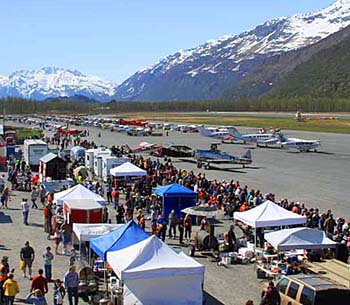 One week later comes the
One week later comes the 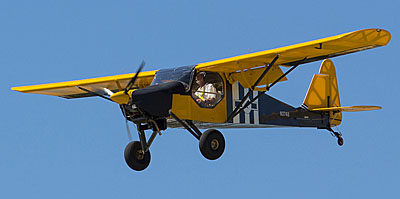 Belite entrepreneur James Weibe has successfully used his tech industry background to raise interest for his latest project, this time his first two seater called Chipper. (It was named Pipper but that apparently energized the anxieties of Piper Aircraft lawyers so James altered the name.)
James has informed his Facebook and email readers with continual updates. After making initial flights fairly recently, he has judged the aircraft able to make a cross country flight.
Chipper uses power from the 912
Belite entrepreneur James Weibe has successfully used his tech industry background to raise interest for his latest project, this time his first two seater called Chipper. (It was named Pipper but that apparently energized the anxieties of Piper Aircraft lawyers so James altered the name.)
James has informed his Facebook and email readers with continual updates. After making initial flights fairly recently, he has judged the aircraft able to make a cross country flight.
Chipper uses power from the 912 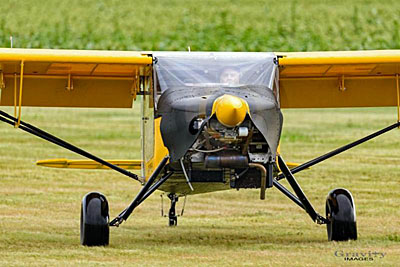 "I flew Chipper to Angel Fire, New Mexico," James exclaimed. "I flew nonstop one way (960 miles roundtrip) from Wichita, Kansas to Angel Fire, performed flight tests, and then returned to Marion, Kansas before the sunset." Now that's a good day's flying.
"Angel Fire is the fourth highest elevation airport in the United States at 8,322 feet above sea level," James reported. "Density altitude was 10,400 feet." Three conditions can degrade aircraft performance at altitude: higher elevation, higher temperature, and higher humidity. The latter is not much of a problem in desert-like New Mexico but all affect aircraft performance. (Humid air, made up of water vapor, is less also dense.)
In my experience, operating at more than 10,000 feet density altitude causes a Cessna 150 or 172 to take significantly more runway to get airborne and climb performance can be sharply reduced.
"I flew Chipper to Angel Fire, New Mexico," James exclaimed. "I flew nonstop one way (960 miles roundtrip) from Wichita, Kansas to Angel Fire, performed flight tests, and then returned to Marion, Kansas before the sunset." Now that's a good day's flying.
"Angel Fire is the fourth highest elevation airport in the United States at 8,322 feet above sea level," James reported. "Density altitude was 10,400 feet." Three conditions can degrade aircraft performance at altitude: higher elevation, higher temperature, and higher humidity. The latter is not much of a problem in desert-like New Mexico but all affect aircraft performance. (Humid air, made up of water vapor, is less also dense.)
In my experience, operating at more than 10,000 feet density altitude causes a Cessna 150 or 172 to take significantly more runway to get airborne and climb performance can be sharply reduced.
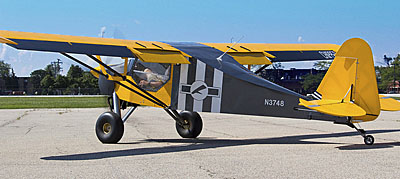 "Chipper's takeoff roll length was 600 feet," said a proud James. "Why did they make the runway 8,900 feet long at Angel Fire," James wondered with a twinkle in his eye?
"Climbout was greater than 200 fpm," he added. Now that's not nearly as fast as a 80-horsepower Chipper would perform at sea level but it's better than a Cessna 150. "Everything in the pattern was normal," James continued, "it just took longer to climb."
For his evaluation, Chipper's test weight was 950 pounds. He observed that a normally-aspirated (carbureted) 80-horsepower Rotax develops 52 horsepower at Angel Fire's pattern altitude.
"Chipper's takeoff roll length was 600 feet," said a proud James. "Why did they make the runway 8,900 feet long at Angel Fire," James wondered with a twinkle in his eye?
"Climbout was greater than 200 fpm," he added. Now that's not nearly as fast as a 80-horsepower Chipper would perform at sea level but it's better than a Cessna 150. "Everything in the pattern was normal," James continued, "it just took longer to climb."
For his evaluation, Chipper's test weight was 950 pounds. He observed that a normally-aspirated (carbureted) 80-horsepower Rotax develops 52 horsepower at Angel Fire's pattern altitude.
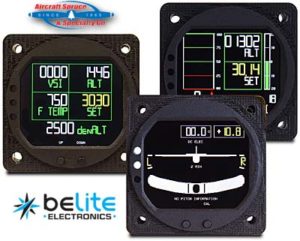
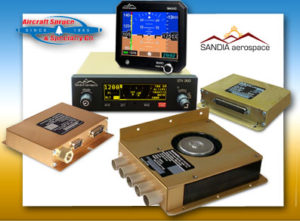
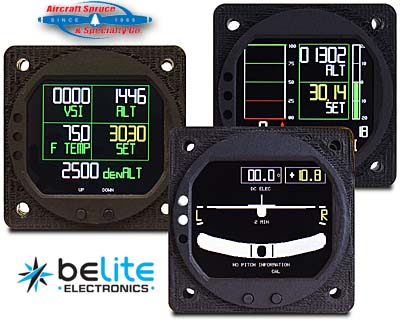

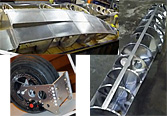
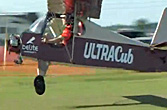
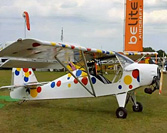

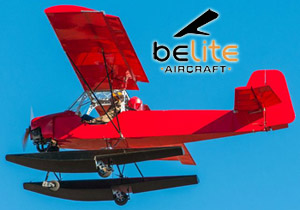
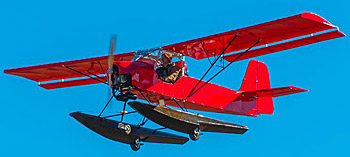
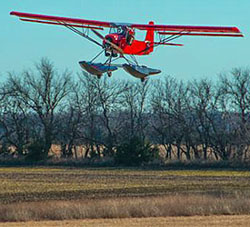

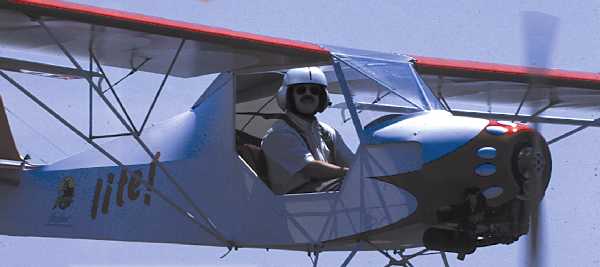 [UPDATE -- fall 2009: This article about the Kitfox Lite refers to a company now several years out of business. The new Kitfox producer sold the Kitfox Lite design to Kansas entrepreneur, James Wiebe. His company, Belite Aircraft, now produces the Belite Carbon 254 (and other variations) and has significantly changed structure with carbon fiber components to lighten the weight, assuring that it meets Part 103. For the latest info on their offerings,
[UPDATE -- fall 2009: This article about the Kitfox Lite refers to a company now several years out of business. The new Kitfox producer sold the Kitfox Lite design to Kansas entrepreneur, James Wiebe. His company, Belite Aircraft, now produces the Belite Carbon 254 (and other variations) and has significantly changed structure with carbon fiber components to lighten the weight, assuring that it meets Part 103. For the latest info on their offerings, 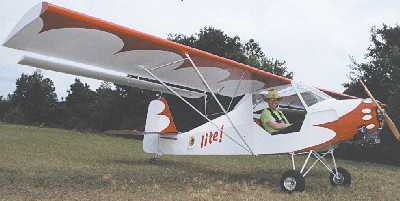





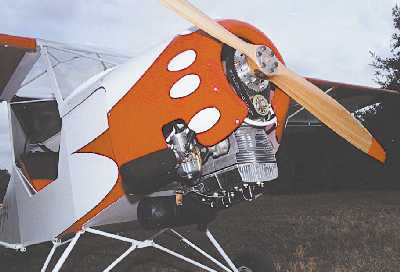




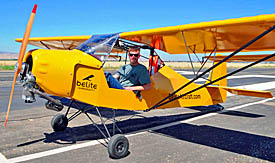
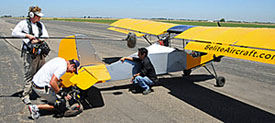 When I was a kid, I used to say, "Just scotch it." I mean that Scotch (brand) tape could fix anything, or so my young mind thought at the time. Apparently, duct tape is the new Scotch tape, at least for aviators trying to fix tears on a fabric-covered aircraft. But,
When I was a kid, I used to say, "Just scotch it." I mean that Scotch (brand) tape could fix anything, or so my young mind thought at the time. Apparently, duct tape is the new Scotch tape, at least for aviators trying to fix tears on a fabric-covered aircraft. But, 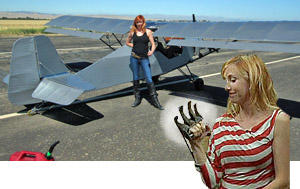 In genuine Hollywood fashion Mythbusters went the distance, not merely patching with duct tape, but covering an entire Belite with the silver sticky stuff carefully striping the Belite vertically and horizontally (photo... yes, that's all duct tape!). After a very short flight without a turn, they found no tape had come loose; the Duct Tape Belite had achieved flight.
In genuine Hollywood fashion Mythbusters went the distance, not merely patching with duct tape, but covering an entire Belite with the silver sticky stuff carefully striping the Belite vertically and horizontally (photo... yes, that's all duct tape!). After a very short flight without a turn, they found no tape had come loose; the Duct Tape Belite had achieved flight.
 James Wiebe flew the plane during filming in June. And therein lies the real story, in my opinion. Through his duct-tape-airplane suggestion, James put light aircraft on national television. Mythbusters reaches about two million Americans, many of them younger people, with a science-is-fun message. I think it's great James got his bird on the show... heck, as the star of the show. OK, the Belite and duct tape.
Wiebe's blog noted that the Mythbusters show drove so many people to Belite's website immediately after it aired that their website crashed. Another proof that even in an age of mobile Internet devices, television still plays a major role in global culture and communication.
James Wiebe flew the plane during filming in June. And therein lies the real story, in my opinion. Through his duct-tape-airplane suggestion, James put light aircraft on national television. Mythbusters reaches about two million Americans, many of them younger people, with a science-is-fun message. I think it's great James got his bird on the show... heck, as the star of the show. OK, the Belite and duct tape.
Wiebe's blog noted that the Mythbusters show drove so many people to Belite's website immediately after it aired that their website crashed. Another proof that even in an age of mobile Internet devices, television still plays a major role in global culture and communication.





